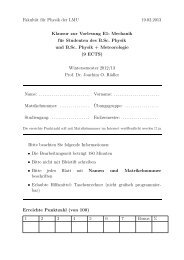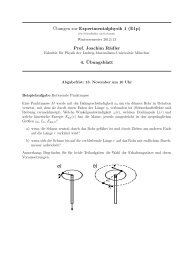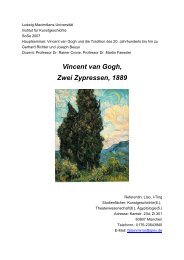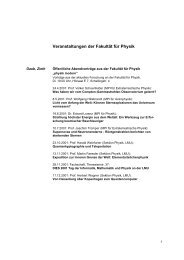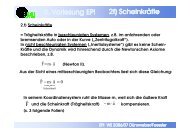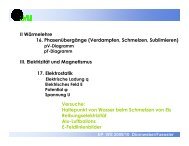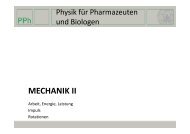Ultrapure, high mobility organic photoconductors
Ultrapure, high mobility organic photoconductors
Ultrapure, high mobility organic photoconductors
You also want an ePaper? Increase the reach of your titles
YUMPU automatically turns print PDFs into web optimized ePapers that Google loves.
170 W. Warta et al.<br />
3. D.C. Hoesterey, G.M. Letson: J. Phys. Chem. Sol. 24, 1609<br />
(1963)<br />
4. N. Karl: In Festktrperprobleme/Advances Solid State Phys.<br />
14, 261 (Vieweg, Braunschweig 1974)<br />
5. L.B. Schein, D.W. Brown: Mol. Cryst. Liq. Cryst. 87, 1 (1981)<br />
6. K.H. Probst, N. Karl: Phys. Stat. Solidi A27, 499 (1975)<br />
7. L.B. Schein, A.R. McGhie: Phys. Rev. B20, 1631 (1979)<br />
8. Z. Burshtein, D.F. Williams: Phys. Rev. B 15, 5769 (1977)<br />
9. W. Tuffentsammer: Stuttgarter Kristallabor (unpublished)<br />
10. N. Karl: High purity <strong>organic</strong> molecular crystals, in Crystals 4<br />
(Springer, Berlin, Heidelberg, New York 1980)<br />
11. N. Karl: J. Crystal Growth 51, 509 (1981)<br />
12. J.F. Nye: Physical Properties of Crystals, Their Represen-<br />
tation by Tensors and Matrices (Clarendon Press,<br />
Oxford 1972)<br />
13. J. Berrthar, M. Schott: Mol. Cryst. Liq. Cryst. 46, 223 (1978)<br />
14. Electric field-dependent electron mobilities #~. reported for<br />
anthracene at 140K by S.Nakano, Y. Maruyarna: Solid<br />
State Commun. 35, 671 (1980) could not be reproduced by<br />
L.B. Schein, R.S. Narang, R.W. Anderson, K.E. Meyer, A.R.<br />
McGhie: Chem. Phys. Lett. 100, 37 (1983) even not at still<br />
<strong>high</strong>er electric fields<br />
15. K. Seeger: Semiconductor Physics, Springer Ser. Solid-State<br />
Phys. 40 (Springer, Berlin, Heidelberg 1982)<br />
16. E.M. Conwell: In Solid State Physics, Suppl. 9 (Academic,<br />
New York 1967)<br />
17. R. Stehle, N. Karl: To be published<br />
18. Y. Maruyama, T. Kobayashi, H. Inokuchi, S. Iwashima: Mol.<br />
Cryst. Liq. Cryst. 20, 373 (1973)<br />
19. For the fit an underlying microscopic <strong>mobility</strong> #o(T) was<br />
assumed which was obtained from an extrapolation of the<br />
T>45K mobilities using the (E-~0) tangent, n=-1.87,<br />
drawn in Fig. 9. It turns out that the trap activation energy<br />
obtained from the data between 14 and 20K is rather<br />
insensitive to the exact go(T) dependence. Even assuming a<br />
constant value, #o = 100 cm2/Vs, would cause only a minor<br />
change of the resulting trap depth (to 16.1 meV). Between<br />
these two extreme assumptions, the resulting trap concentration<br />
changes from 5 x 10 - 4 to 2 10- 4 mol/mol. - The<br />
discrepancy between the calculated and the measured <strong>mobility</strong><br />
curves in the range between 20 and 45 K results from<br />
the fact that the measured mobifities in this <strong>high</strong>-<strong>mobility</strong><br />
region are strongly dependent on the applied electric field<br />
strength. - For very shallow traps, as found here, the<br />
possibility of field-activated detrapping (Pool-Frenkel effect)<br />
can require a revision of the simple Hoesterey-Letson<br />
description. However, this effect can be estimated to decrease<br />
the thermal activation energy by only a few meV for the fields<br />
used here




